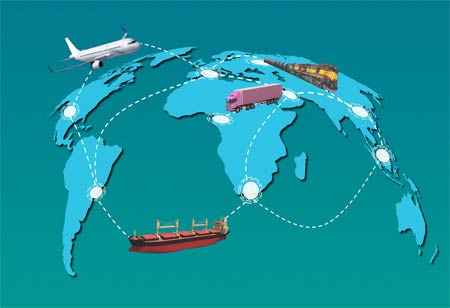THANK YOU FOR SUBSCRIBING
THANK YOU FOR SUBSCRIBING

By
Logistics Transportation Review | Wednesday, February 28, 2024
Stay ahead of the industry with exclusive feature stories on the top companies, expert insights and the latest news delivered straight to your inbox. Subscribe today.
The Asia-Pacific region's ports must adapt to economic and trade changes, utilizing data-driven decision-making, skill development, agility, and flexibility to maintain their global trade role.
FREMONT, CA: The Asia-Pacific (APAC) region has historically stood as a cornerstone of global trade, and its vibrant seaports are essential conduits for transporting goods. Nonetheless, this region's economic and trade dynamics are in a continual state of flux. Seaport administrators must respond by embracing adaptation and innovation to uphold competitiveness.
Current Economic and Trade Trends in APAC
The rise of regional trade blocs, exemplified by agreements such as the Regional Comprehensive Economic Partnership (RCEP), stimulates heightened intra-regional trade activity. This trend underscores the strategic significance of ports along these trade routes, poised to capitalize on emerging opportunities. Concurrently, the exponential growth of e-commerce is reshaping cargo dynamics, necessitating ports to enhance their infrastructure to accommodate the increasing volume of smaller, containerized shipments. Furthermore, the evolving landscape of global manufacturing, characterized by the emergence of alternative production bases like Vietnam and India alongside China, underscores the need for ports to adapt and cater to a diversified array of regional manufacturing hubs.
Impact on Seaport Management
The APAC seaports present a dual spectrum of challenges and opportunities. Infrastructure upgrades are necessary, encompassing investments in modernized systems such as automated handling, deeper harbors to accommodate larger vessels, and enhanced inland connectivity to effectively manage escalating cargo volumes and diversification. Embracing digitalization with integrating technologies like blockchain for cargo tracking and adopting innovative port management systems offers avenues for heightened efficiency, transparency, and security. Moreover, an increasing focus on sustainability underscores the imperative for ports to implement environmentally conscious practices, including energy-efficient operations and the development of green infrastructure. Concurrently, strategic partnerships with regional stakeholders, spanning other ports, logistics providers, and governmental entities, present opportunities for knowledge exchange, resource optimization, and collaborative development initiatives, positioning APAC seaports to navigate and capitalize on the shifting industry landscape effectively.
Adapting to Changing Trade Dynamics
To excel within the ever-evolving landscape of APAC seaport management, employing strategic approaches is paramount. First and foremost, embracing data-driven decision-making is imperative. Leveraging sophisticated data analytics enables a comprehensive understanding of evolving trade dynamics, consumer trends, and global economic shifts, facilitating proactive planning and optimized resource distribution. Moreover, prioritizing skill development through robust workforce training initiatives is essential. Equipping employees with the expertise to proficiently utilize advanced technologies and navigate intricate trade landscapes fosters operational efficiency and competitiveness.
Additionally, fostering agility and flexibility is crucial. Adapting swiftly to disruptions and fluctuating market demands necessitates diversifying cargo handling capabilities and exploring novel revenue streams such as value-added services. By embracing these strategies, APAC seaport management can fortify its position amidst the complexities of contemporary commerce.
APAC seaports' continued relevance and success are contingent upon their ability to respond to and integrate change adeptly. APAC seaports can sustain their pivotal role within the global trade framework through a comprehensive comprehension of the economic and trade milieu, prudent allocation of resources towards contemporary infrastructure and technological advancements, and the cultivation of strategic alliances. Such proactive measures are imperative for fostering sustained economic advancement and prosperity throughout the region.
I agree We use cookies on this website to enhance your user experience. By clicking any link on this page you are giving your consent for us to set cookies. More info





